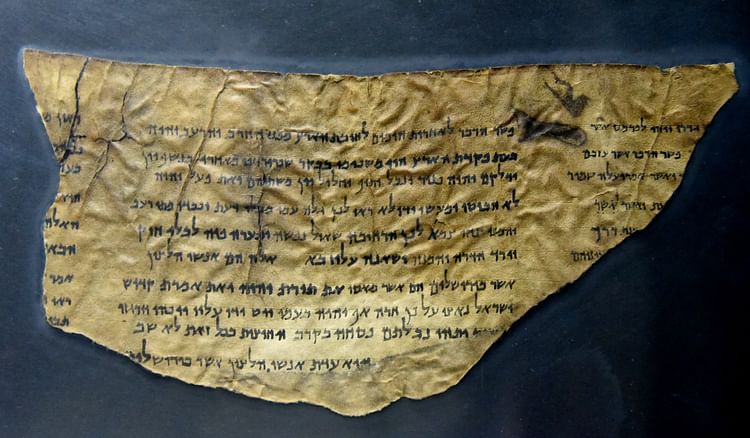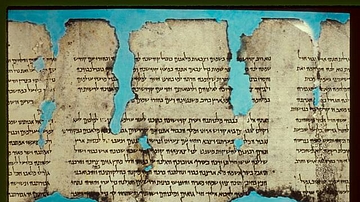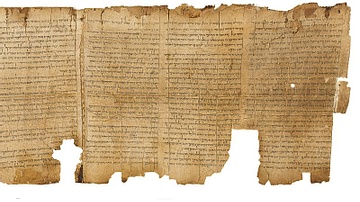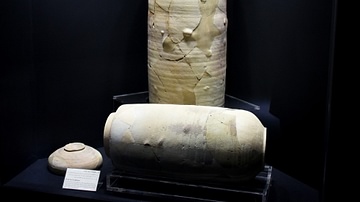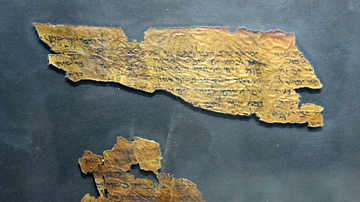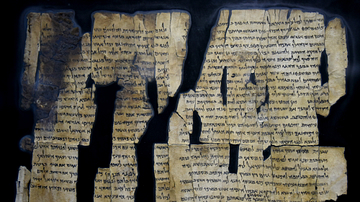Server Costs Fundraiser 2024
Illustration
This is part of Pesher Isaiah, scroll number 4Q162, which was found in Cave 4 at Qumran (Khirbet Qumran or Wadi Qumran). A pesher is a type of commentary. The Dead Sea Scrolls are ancient Jewish religious manuscripts. The majority were written in Hebrew script on leather or papyrus; however, many were written in Aramaic, Greek, and Nabataean-Aramaic. They were rolled-up and stored in specific jars with tight-fitting covers. When initially found, they were either scrolls or fragments of manuscripts or texts of previous complete scrolls; some of them were torn into thousands of fragments. Cave 4 originally contained about three-quarters of the scrolls. The precise dating of the scrolls is unknown; scholars give the range of 408 BCE to 318 CE. From Qumran Cave 4, West Bank of the Jordan River, near the north part of the Dead Sea, modern-day State of Israel. (The Jordan Museum, Amman, Jordan Hashemite Kingdom).
About the Author
Cite This Work
APA Style
Amin, O. S. M. (2018, April 06). Dead Sea Scroll of Pesher Isaiah. World History Encyclopedia. Retrieved from https://www.worldhistory.org/image/8464/dead-sea-scroll-of-pesher-isaiah/
Chicago Style
Amin, Osama Shukir Muhammed. "Dead Sea Scroll of Pesher Isaiah." World History Encyclopedia. Last modified April 06, 2018. https://www.worldhistory.org/image/8464/dead-sea-scroll-of-pesher-isaiah/.
MLA Style
Amin, Osama Shukir Muhammed. "Dead Sea Scroll of Pesher Isaiah." World History Encyclopedia. World History Encyclopedia, 06 Apr 2018. Web. 26 Jul 2024.

